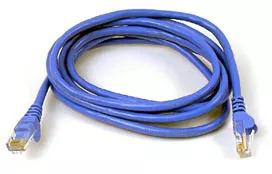 Ethernet cables can be quite expensive and pre-made lengths are not always the length you need. Making Ethernet cables is easy with a box of bulk Category 5e Ethernet cables and RJ-45 connectors that are attached to the cut ends of your preferred cable length.
Ethernet cables can be quite expensive and pre-made lengths are not always the length you need. Making Ethernet cables is easy with a box of bulk Category 5e Ethernet cables and RJ-45 connectors that are attached to the cut ends of your preferred cable length.How to Make an Ethernet Cable – What You’ll Need
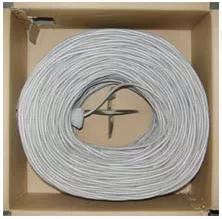
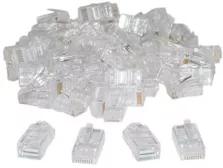
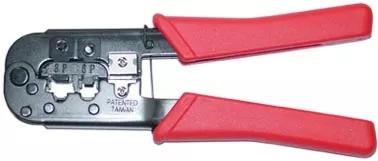
The two kinds of Ethernet cables you can make
There are two kinds of Ethernet cables you can make: straight through and crossover.
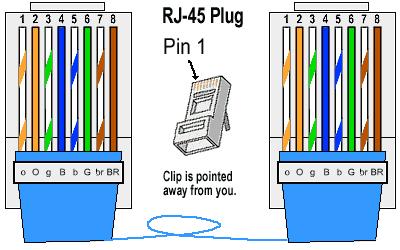
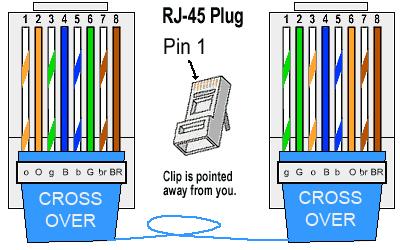
How to make a standard cable
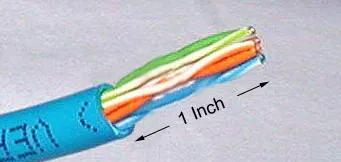 Cut into the plastic sheath about
Cut into the plastic sheath about
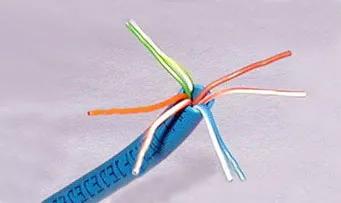 Unwind and pair the similar colors.
Unwind and pair the similar colors.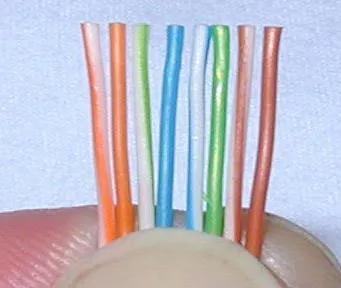 Pinch the wires between your fingers and straighten them out as shown. The colour order is important to get correct.
Pinch the wires between your fingers and straighten them out as shown. The colour order is important to get correct.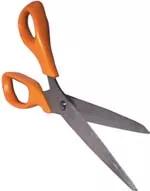 Use scissors to make a straight cut across the eight wires to shorten them to
Use scissors to make a straight cut across the eight wires to shorten them to
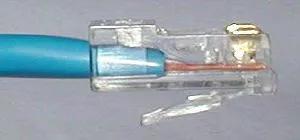 Carefully push all eight unstripped coloured wires into the connector. Note the position of the blue plastic sleeve. Also note how the wires go all the way to the end.
Carefully push all eight unstripped coloured wires into the connector. Note the position of the blue plastic sleeve. Also note how the wires go all the way to the end.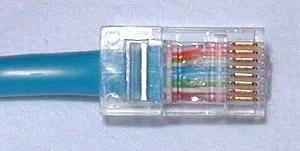 A view from the top. All the wires are all the way in. There are no short wires.
A view from the top. All the wires are all the way in. There are no short wires.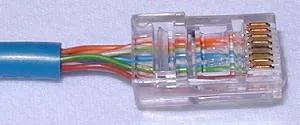
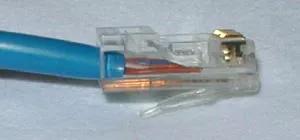
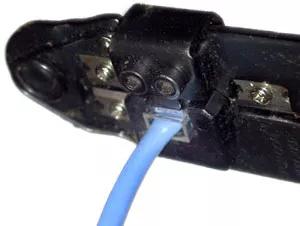
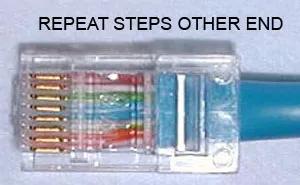 For a standard ‘straight through’ cable, repeat all steps and wire colour order on the other end of the cable. For a crossover cable, the other end will have a different colour order as shown by the crossover picture above.
For a standard ‘straight through’ cable, repeat all steps and wire colour order on the other end of the cable. For a crossover cable, the other end will have a different colour order as shown by the crossover picture above.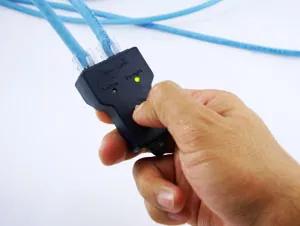 Make sure to test the cables before installing them. An inexpensive Ethernet cable tester does this quite well.
Make sure to test the cables before installing them. An inexpensive Ethernet cable tester does this quite well.NOTE – The maximum cable length of CAT-5, CAT-5e or CAT-6 Ethernet cable is 328 feet or 100 metres.
Need any more help?
If you're not a Ground Control customer, but would like to learn more about our satellite connectivity services, please complete the form - we would love to hear from you.

